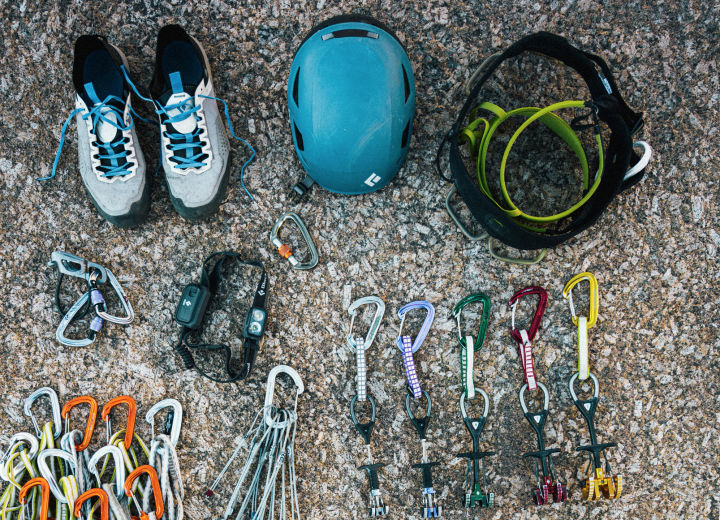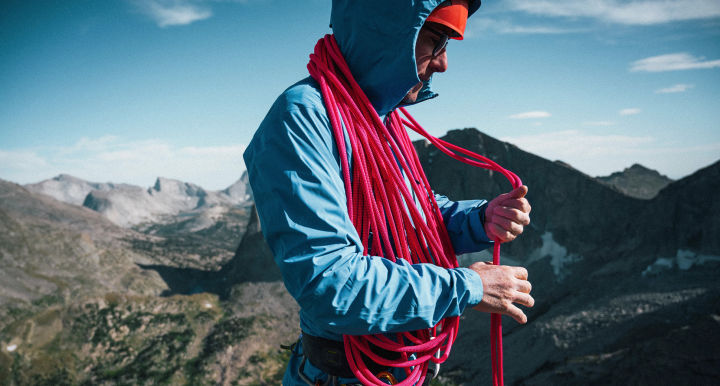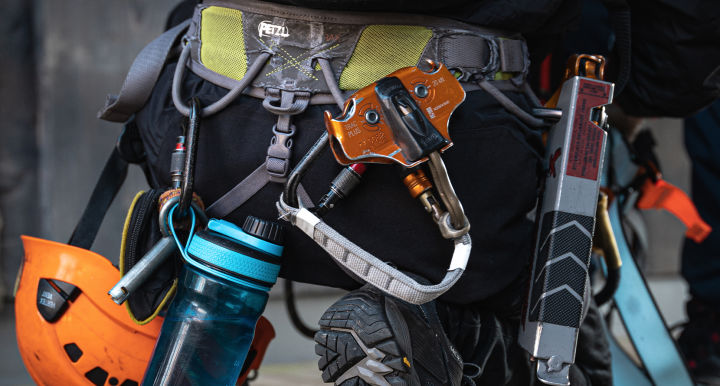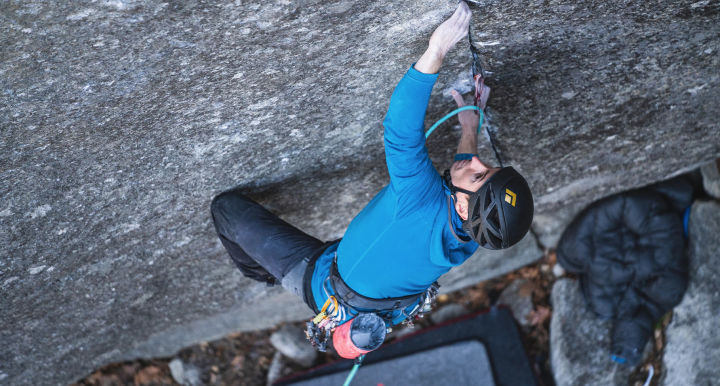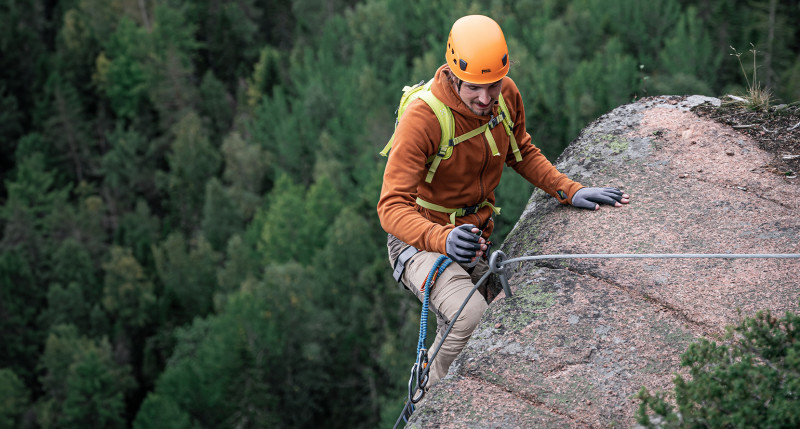
Taking care of your climbing gear
How to take care of your climbing equipment can feel like a jungle. The most common questions we face are about rope life, storage and what to do after a fall. Ropes, harnesses and slings are perishable and should be checked often, but what should you look out for? This guide is designed to answer your questions about the care of climbing equipment.
Things to consider with your climbing equipment:
- Inspect the equipment carefully before and after each use
- Store the equipment in a dark, cool and dry place
- Clean your equipment with mild soap and water if it becomes dirty
- Be sure to inform yourself of and follow the manufacturer's guidelines
How to store climbing ropes?
Store your climbing equipment in a clean, dry and well-ventilated place. Store your harness hanging and the rope wrapped to avoid wear and tear. Keep it away from direct sunlight, extreme temperatures and moisture. Avoid storing it in compressed or twisted positions that can cause damage to the rope core. A rope bag is recommended to keep track of your ropes, as well as reduce the risk of dirt and wear when not in use.
How long can you use climbing ropes?
A climbing rope generally has a shelf life of 10 years from the date of production when not in use. In terms of shelf life in use, a rope can last anywhere from 1 to 3 years before needing replacement, hence it is important that you as a user frequently check your ropes for signs of wear and tear. In case of a factor-two fall, it is recommended to replace the rope regardless.
How long can you use a harness?
A climbing harness has a lifespan of 10 years from the date of production when not in use. In use, the lifespan can be anywhere between 2–5 years, which makes it particularly important that you carry out continuous inspections and maintenance of your harness.
Can a harness that has suffered a fall be used again?
A common question is whether a harness can be used again after a fall. Yes, a climbing harness is designed to take hundreds of falls during its lifetime. That said, it is still important to check the harness after a fall.
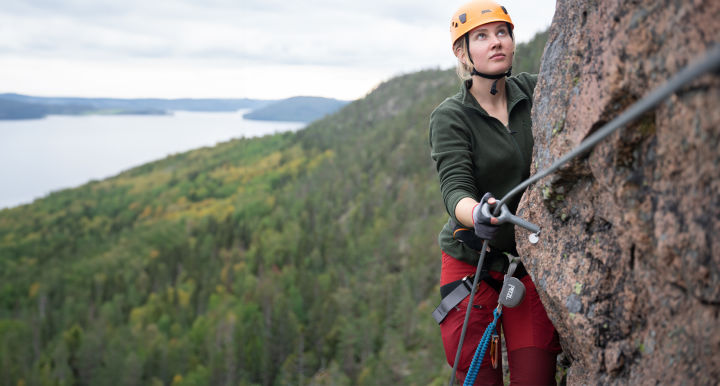

How do I take care of my climbing equipment?
Proper care and maintenance of climbing equipment is essential for safety and longevity. Here are some general guidelines:
- Inspect regularly — inspect your climbing equipment carefully before and after each use. Check for signs of wear, abrasion or damage. Pay close attention to harnesses, ropes, carabiners and helmets.
- Clean as needed — if your equipment gets dirty or muddy, clean it with mild soap and water. Avoid using harsh chemicals or abrasive materials that can compromise the integrity of the equipment. Rinse thoroughly and let it air dry before storing.
- Store in a dark, cool and dry place — Sunlight wears down your equipment and can reduce its lifespan. Storing your equipment in the dark reduces the risk of wear and tear. Wet or dirty climbing gear can have a drastically reduced breaking strength.
- Follow the manufacturer's guidelines— Always follow the specific care instructions provided by the manufacturer for each piece of climbing equipment you own. They may have specific recommendations or restrictions that should be followed.
Rope care
Inspect your climbing rope regularly for signs of wear, such as fraying or core exposure. Go through the full length of the rope and look for soft spots in the core. The rope usually wears most in the first 5 meters, where you make your knots. By switching sides between uses, you can reduce wear and tear and extend the life of the rope. Should you feel any soft spots in the core, you can cut off that part of the rope and continue using the rest. If you see signs of fraying or core exposure, the rope should be discarded. Keep it away from sharp edges and chemicals. Avoid stepping on the rope and protect it from dirt or gravel. Impregnation keeps moisture out. A soaked rope can be downright deadly for climbing as the breaking strength under dynamic load (fall) drops by up to 70 %.
Harness care
Clean the harness with mild soap and water if it gets dirty. Avoid exposure to chemicals or solvents. Inspect the harness for signs of wear, including worn fabric or damaged buckles. The most important part of the harness is the attachment loop, which is the attachment point between you and the rope. Check this part carefully for damage or wear.
Carabiner maintenance
Inspect carabiners for signs of damage, such as cracks or sharp edges. If you see cracks or damage to the carabiner, replace it. Keep them clean and lubricate the gate with a silicone-based lubricant if it becomes stiff. If you drop your carabiner on a rock or other hard surface, you should discard the carabiner due to possible cracks. In case of a factor-two fall, it is strongly recommended to discard the carabiner.
Helmet care
Clean the helmet with mild soap and water as needed. Avoid using abrasive materials that may scratch the surface. Check the helmet for any cracks or damage and replace it if necessary.
Remember, if you are unsure about the care or maintenance of any climbing equipment, consult the manufacturer or seek guidance from a climbing instructor. Safety should always be the top priority when using climbing equipment.
